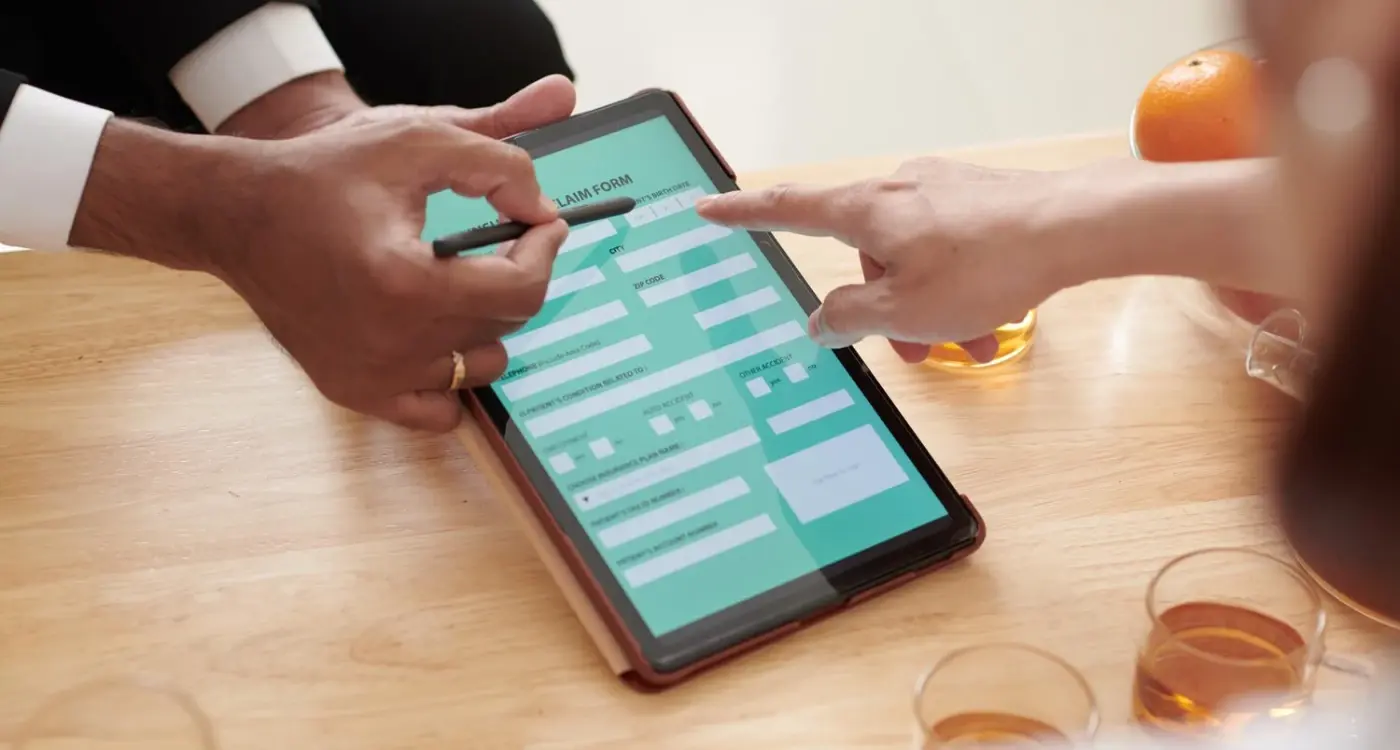What's The Simplest Blockchain Feature I Can Add To My App?
Last month I was chatting with a client who'd built a brilliant food delivery app. Great interface, smooth ordering process, happy customers—but there was one problem that kept cropping up. Users would claim they never received their orders, drivers would insist they'd delivered everything, and the restaurant owners were stuck in the middle trying to work out what actually happened. Sound familiar? This isn't just about food delivery; it's the same headache that crops up in any app where trust matters—which is pretty much every app these days.
The thing is, we're living in an age where people expect transparency. They want to know where their data goes, how their money moves, and whether the person on the other end of the transaction is legit. Traditional solutions often involve complex backend systems, expensive third-party services, or mountains of paperwork that nobody really trusts anyway.
The best blockchain features are the ones your users don't even notice—they just make everything work better
That's where blockchain comes in, and no, I'm not talking about cryptocurrency mining or complex smart contracts. I'm talking about simple integration that solves real problems without making your mobile app complicated. The beauty of blockchain isn't in its complexity—it's in how it can make simple things work better. Trust, transparency, and security don't have to be expensive or difficult to implement.
What Is Blockchain and Why Should You Care
I'll be straight with you—blockchain isn't nearly as complicated as people make it sound. At its core, blockchain is just a way of storing information that makes it really, really hard to change or fake. Think of it like a notebook that everyone can read, but once something is written in it, you can't rub it out.
The clever bit is that this notebook isn't kept in one place. Copies exist on thousands of computers around the world, and they all have to agree before anything new gets written down. This means no single person or company controls it, which is why people get excited about it.
Why Mobile App Developers Should Pay Attention
Now, you might be wondering why any of this matters for your mobile app. Fair question! The thing is, users are becoming more aware of how their data gets used and they want more control. Blockchain can help with that—it can make your app more trustworthy and transparent without requiring a computer science degree to understand.
Here's what blockchain can do for your app:
- Create records that users can trust haven't been tampered with
- Let users own their data instead of you holding it all
- Build reward systems that actually work across different platforms
- Make payments faster and cheaper
- Prove that something happened at a specific time
The best part? You don't need to rebuild your entire app to get these benefits. Small, simple additions can make a real difference.
The Simplest Start: Digital Receipts
Right, let's talk about the easiest way to dip your toes into blockchain waters—digital receipts. Now, I know what you're thinking: receipts don't sound particularly exciting, do they? But hear me out on this one.
Traditional receipts are frankly rubbish. They fade, get lost, and half the time you can't read them anyway. Digital receipts stored on a blockchain solve all these problems in one go. When someone makes a purchase in your app, you create a permanent, tamper-proof record that can't be altered or deleted.
Why Digital Receipts Make Perfect Sense
The beauty of blockchain receipts lies in their simplicity. Users don't need to understand the technology—they just see a reliable record of their transaction. Meanwhile, you get the benefits of immutable data storage without the complexity of smart contracts or cryptocurrency payments.
- Permanent record that won't disappear
- Can't be tampered with or forged
- Builds trust with your users
- Simple integration into existing payment flows
Start with receipts for high-value purchases or subscription renewals where users really need reliable proof of payment.
This approach gives you experience with blockchain technology whilst adding genuine value for users. It's a win-win situation that doesn't require you to rebuild your entire app architecture.
User Authentication Without Passwords
Right, let's talk about one of the biggest headaches in mobile apps—passwords. Your users hate them, you hate managing them, and they're honestly not that secure anyway. I've watched countless apps struggle with password resets, forgotten logins, and users who just give up because they can't remember their details.
Blockchain offers a neat solution that's surprisingly simple to implement. Instead of passwords, your app can use something called cryptographic keys. Think of it as a digital signature that's unique to each user—they can't forget it because it's stored securely on their device.
How It Works
When someone opens your app for the first time, it generates a unique digital key pair. One part stays private on their phone, the other becomes their public identity. When they want to log in, their phone uses the private key to prove who they are without ever revealing the actual key.
Why This Makes Sense
The benefits are pretty compelling:
- No more "forgot password" emails cluttering support tickets
- Users can't pick terrible passwords like "password123"
- No central password database for hackers to target
- Works offline—users don't need internet to authenticate
- One-tap login that actually works
I'll be honest—this isn't the absolute simplest blockchain feature to add, but it's probably the most immediately useful for your users. The setup takes a weekend, not months.
Reward Points That Actually Work
Most loyalty programmes are rubbish, aren't they? You collect points for months, then the company changes the rules or the points mysteriously disappear. I've lost count of how many times clients have told me horror stories about traditional reward systems that left their customers feeling cheated.
Blockchain changes this completely. When you put reward points on a blockchain, they become permanent and transparent—nobody can just delete them or pretend they don't exist. Users can see exactly how many points they have, when they earned them, and what they can spend them on. No more "computer says no" moments at checkout.
Why Blockchain Points Work Better
The simple integration here is brilliant. Instead of storing points in your own database where you control everything, you put them on a blockchain where the rules are set in stone. Users trust the system more because they can verify their balance independently; you save money on customer service because there are fewer disputes about missing points.
The best part about blockchain rewards is that users actually believe they own something valuable, not just numbers in your database
Setting up blockchain rewards isn't complicated—you're basically creating digital tokens that represent points. Users earn them through your mobile app, and the blockchain keeps track of everything automatically. It's like having a completely honest accountant that never makes mistakes.
Making Data Sharing Transparent
Data sharing gets a bad reputation these days—and rightfully so. Most people have no idea what information their apps are collecting or where it ends up. That's where blockchain comes in handy; it can make your data sharing completely transparent and give users real control.
The basic idea is simple: every time your app shares user data, you record it on the blockchain. Users can see exactly what data was shared, when it happened, and who received it. No more mystery about what happens to their information behind the scenes.
How It Works in Practice
When someone agrees to share their data through your app, you create a blockchain record that shows:
- What specific data was shared (email, location, preferences)
- Which company or service received it
- When the sharing happened
- How long they can keep the data
- Whether the user can revoke access later
This creates an unchangeable audit trail that users can check anytime. They might discover they shared their location data with a weather service last month, or see that a shopping app still has access to their purchase history.
Why Users Love This Approach
People feel more comfortable sharing their data when they know exactly what's happening with it. You're not hiding anything or using confusing privacy policies—everything is laid out clearly on the blockchain for them to see whenever they want.
Simple Payment Integration
Now we're getting into the good stuff—money. Blockchain payments aren't just for tech wizards anymore; they're becoming a straightforward way to handle transactions in your mobile app. The beauty of blockchain payments lies in their transparency and security, plus they can work across borders without the usual banking headaches.
Let's be honest, traditional payment systems can be a right pain. You've got multiple intermediaries, high fees for international transfers, and settlement times that feel like watching paint dry. Blockchain payments cut through this mess by allowing direct peer-to-peer transactions that settle in minutes, not days.
What Makes Blockchain Payments Different
The main advantage is elimination of middlemen—well, most of them anyway. When someone pays through your app using blockchain, the transaction goes directly from their wallet to yours. No banks sitting in the middle taking their cut and adding delays.
Start with stablecoins like USDC or USDT for your first blockchain payment integration. They maintain steady value and feel familiar to users whilst giving you all the blockchain benefits.
Implementation Options
You don't need to build everything from scratch. Payment processors like Stripe now support crypto payments, making simple integration into your existing mobile app relatively painless. Here are your main options:
- Third-party payment processors with crypto support
- Direct wallet integration using APIs
- QR code-based payments for quick transactions
- Hybrid systems that accept both traditional and crypto payments
The key is starting small and testing with real users before rolling out to your entire customer base.
Choosing Your First Blockchain Step
Right, so you've read through all the options and you're probably thinking "this all sounds great, but where do I actually start?" I get this question a lot from clients—they want to add blockchain features but they're worried about picking the wrong starting point.
The truth is, there isn't really a wrong choice here. What matters more is picking something that makes sense for your users and your business goals. If you're running an e-commerce app, digital receipts are probably your best bet. Got a loyalty programme? Start with reward points. Building a community app? User authentication might be the way to go.
Your Decision Framework
When I help clients choose their first blockchain feature, I always ask them to consider these questions:
- What problem are your users complaining about most?
- Which feature would save you the most operational headaches?
- What's your technical team comfortable building?
- How much budget can you allocate to this first experiment?
Start small, test it properly, and see how your users respond. You can always add more blockchain features later—but getting that first one right will give you the confidence and experience to tackle bigger implementations down the line.
Conclusion
Look, I'll be straight with you—blockchain doesn't have to be complicated. After walking through digital receipts, passwordless authentication, reward points, transparent data sharing, and payment integration, you can see there are plenty of ways to start small. The key is picking something that makes sense for your users, not just adding blockchain because it sounds trendy.
Most of the founders I work with think they need to build the next revolutionary crypto platform when really they just need one simple integration that solves a real problem. Digital receipts are brilliant for retail apps; reward points work wonders for loyalty programmes; passwordless login makes everyone's life easier. Start with what your users actually need.
The mobile app space moves fast, and blockchain integration is getting simpler every month. What took months to implement a few years ago can now be done in weeks with the right approach. Don't overthink it—pick your simplest blockchain feature, test it with real users, and build from there. Your users will thank you for solving their problems, not for using the latest technology just because you can.
Share this
Subscribe To Our Learning Centre
You May Also Like
These Related Guides

What's The Difference Between AI And Machine Learning In Apps?

What Are the Biggest Mistakes Developers Make With Accessible Forms?



